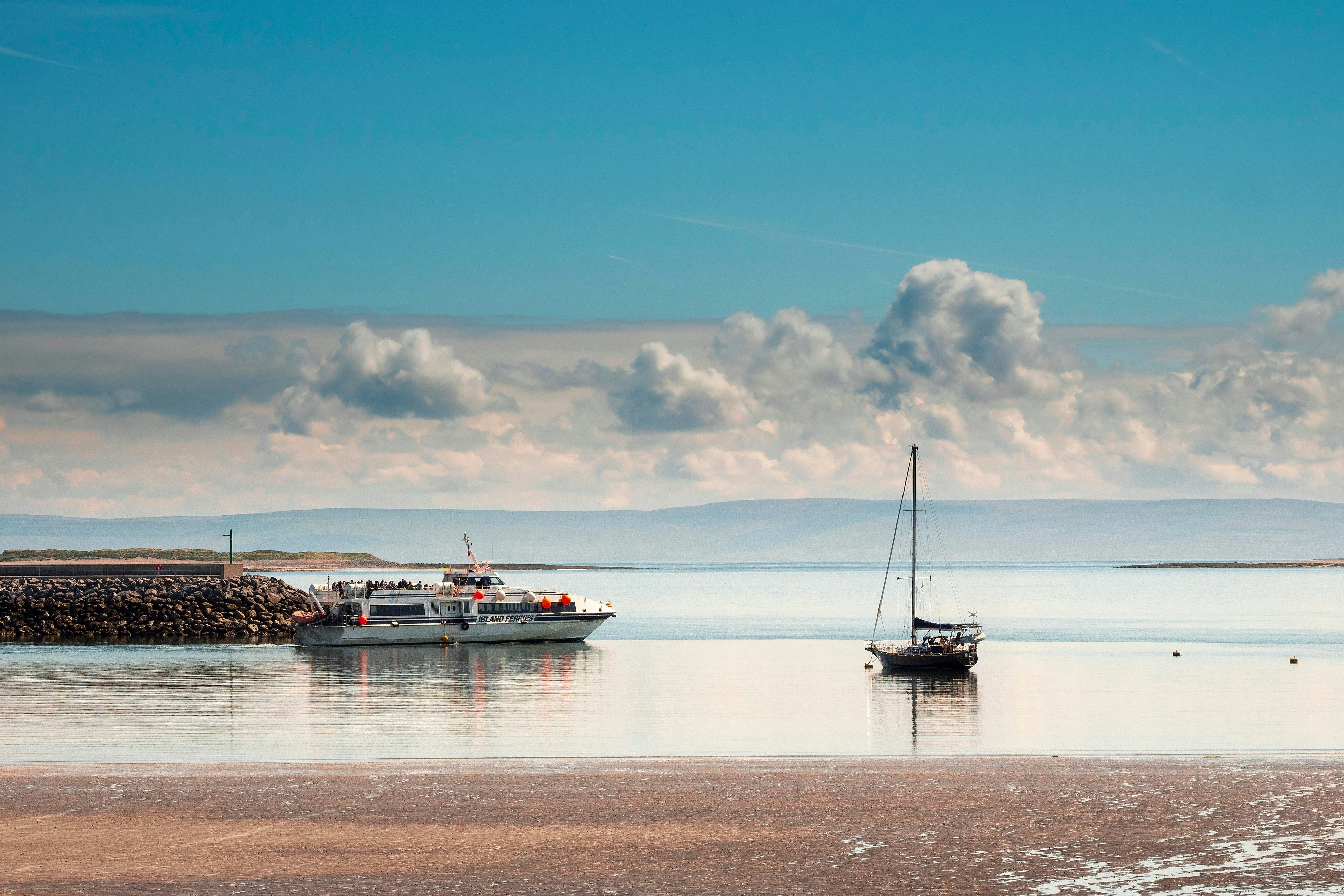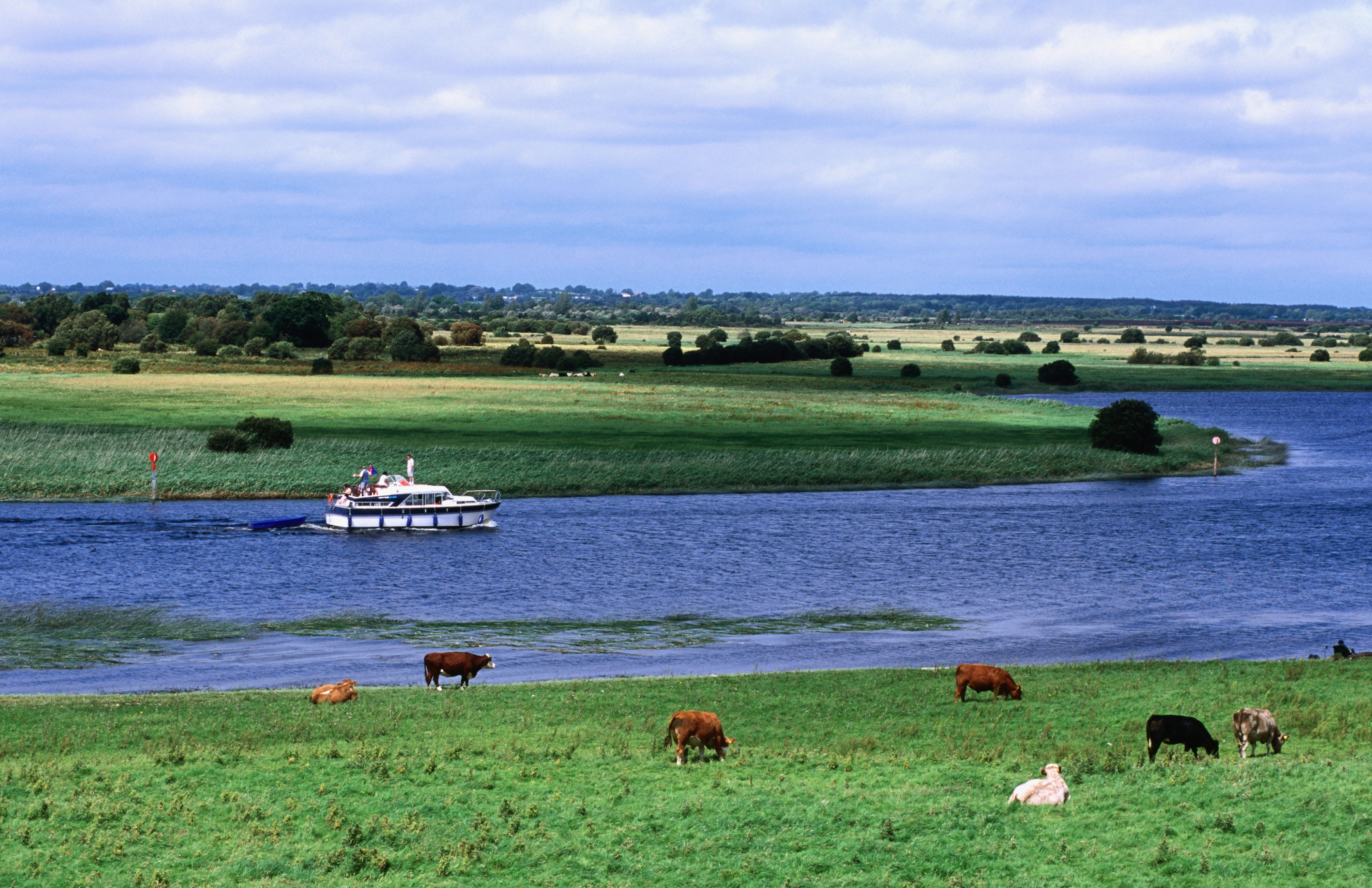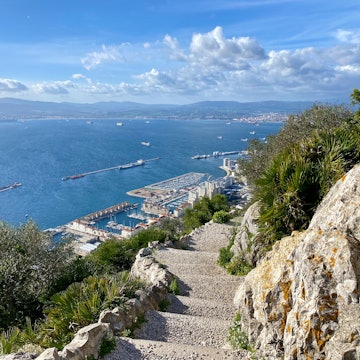
Trains, ferries and rental cars: the best ways to get around Ireland

Mar 13, 2024 • 7 min read

You don’t need to rent a car to get around Ireland: Irish Rail’s network connects major cities throughout the country © Dawid K Photography / Shutterstock
Independent visitors to Ireland have historically counted on renting a car to get around the country.
Yet soaring costs (including tolls, parking, fuel and more) plus the environmental impact of driving have inspired many to seek out alternative ways to reach the country’s magnificent coastlines, lush green countryside and ancient historical sites.
Indeed, public transport in Ireland has improved dramatically over the years. Irish Rail’s direct city-to-city links and Bus Éireann’s comprehensive nationwide network make a car-free journey across possible more than feasible. Hefty discounts mean that – bar relying on a bicycle or foot – public transit is also the cheapest way to explore Ireland.
Before you decide which mode of transport is most suitable for your upcoming visit, read our top tips for getting around Ireland.

Car rental offers flexibility – but isn’t cheap
Since Ireland is about the same size as South Carolina in the US, first-time visitors often think they can see it all in a week with a rented car. Seasoned travelers know better.
Drivers must access many of the most spectacular locations via winding, narrow country lanes where every bend in the road offers a plethora of photo opportunities. The darker evenings of the off season can be particularly challenging, and in winter months the roads often have black ice.
Motorways have a maximum speed limit of 120 km/h (74 mph), while dual carriageways have a maximum speed of 100 km/h (62 mph). Most tolls have staffed booths to process payments – but some motorways, such as the M1, require immediate payment online to avoid a penalty. When exploring major towns and cities, it’s always a good idea to leave your vehicle in a parking lot on the edge of town and explore on foot. Aggressive drivers and narrow streets are not for the fainthearted.
Plan your driving itinerary before you arrive in Ireland
The biggest car-rental hubs are at the airports. If you don’t have a few weeks to tour the entire country, there are a number of ways to make the best use of your time. First, check to see if your rental company permits a different drop-off location, and plan to begin and end your trip and different airports (think an arrival in Dublin and departure from Shannon). Then, fill in your cross-country from there, focusing on either the northern or southern counties as you go. Head south to visit captivating counties like Kilkenny, Cork, Kerry and Clare. Alternatively head north to enjoy Belfast; the Antrim Coast; and Counties Donegal, Mayo and Galway. If you'd like to drive through Northern Ireland, check that your car insurance covers the UK before you go.
The first rule of public transport in Ireland? Buy a Leap card
Your first step for maximizing your travel around Ireland on publicly funded transportation is to go online and buy a Leap Card. The card offers substantial discounts on bus, tram and train fares across the country, and is a much more secure option than paying cash each time.

Train travel is the best option for inter-city travel
Due to exorbitant car-rental costs, more and more visitors are now getting around Ireland by train. Ireland’s rail network offers reliable links between urban centers – and it’s cost-effective, too. Irish Rail (known as Iarnród Éireann in Gaeilge, the Irish language) has slashed fares for users under 24. And the service offers good value for anyone using a Leap Card – think fares up to 30% off, and a price cap for multiple-leg trips.
Explore Dublin’s suburbs on The DART
The DART (Dublin Area Rapid Transit) is a light-rail system that links the capital to its seaside suburbs; a separate diesel-train system operates as a commuter service to towns further afield. Dublin’s Connolly Station connects to Sligo and Northern Ireland, while Heuston Station has services to urban hubs in the midlands and southern counties. The cities of Galway, Limerick and Cork are interlinked with another series of lines.

The extensive bus network can take you almost everywhere
While the train offers good inter-city service, the network can’t compare to the vast number destinations reached by public and private buses. By using the train as a launch pad, you can enjoy the speed and comfort of rail to get to transport hubs – before switching to the bus for shorter journeys.
The Leap Card also works for Bus Éireann (the main national service), Dublin Bus and a few private operators. This means you can jump off at a place you like the look of along the way, then catch the next bus without having to buy a new ticket. Bus Éireann has an Expressway service that’s similar to the rail network, only that it serves airports.
A typical bus journey through beautiful rural areas can be as rewarding as the destination. County Clare’s 350 bus service skims along the Atlantic edge of the Burren National Park and passes by the Cliffs of Moher, while the 237 passes through a chain of pretty seaside towns in County Cork. Similar services are available for Dingle, the Ring of Kerry, Connemara and the Beara Peninsula – though it’s important to check timetables as they're not as regular.
Dublin and Belfast have year-round hop-on, hop-off (HOHO) city bus tours operated by private companies. Galway and Cork Cities offer seasonal city HOHO tours, too.

Dublin City is easy to explore on the Luas
Dublin’s modern-day tram service has been part of the city’s life and streetscape for the last couple of decades and is the best way to get around the capital. The Luas (which means “speed” in Irish) Green Line travels from north to south, while the Red Line travels from east to west; both cross paths in the city center. The tram offers a thrifty way to move quickly from the city to its outer reaches. And, yes: the Leap Card gets you a reduced rate on this service, too.
You’ll find taxis and rideshares in urban centers
Major rideshare operators like Uber and private taxis operate in Ireland, with registered taxis findable at stands at transport hubs and in urban centers. Private bus services and tour operators often offer tailored services that can offer good value for money for larger groups and families.

Hop on a ferry to reach Ireland’s remote islands
Few visitors are disappointed by making the effort to reach one (or more!) of Ireland’s many small but perfectly formed islands. Most ferry services scale back or stop completely from the start of November, including the popular Doolin–to–Aran Islands link. There is, however, a year-round ferry and air service from Connemara. Drivers can take a ferry across the River Shannon to travel directly from County Kerry to County Clare.

Rent your own boat to float down the River Shannon
Visitors who want to travel at their own pace and take the waterway less traveled can hire a boat on the Shannon from Lough Derg to Lough Erne, or anywhere in between. Along the 362km (225-mile) river, with its stretches of rich landscapes and pretty villages, you’ll find plenty of spots to collect or to drop off a rented boat.

Escape the tarmac with off-road cycling and hiking routes
Ireland boasts an endless array of off-road hiking and cycling routes – and the network grows every year. Disused railway lines in Mayo and Limerick provide spectacular backdrops to trails, while the Beara Peninsula in County Cork is the trailhead for the longest trek in Ireland.
Accessible transportation in Ireland
Those with mobility issues have enjoyed improved options for getting around Ireland in recent years. Detailed information about wheelchair access and tailored accessibility is available on the websites of transport operators such as Dublin Bus, Go-Ahead Ireland, Iarnród Éireann (Irish Rail), Bus Éireann and the Luas.
When it comes to getting around Ireland with a baby, children under 5 accompanied by a Leap Card holder can travel on Bus Éireann (including Expressway), Luas, Irish Rail and Dublin Bus for free. Space will be offered for prams and strollers – unless it is already required for a wheelchair.















